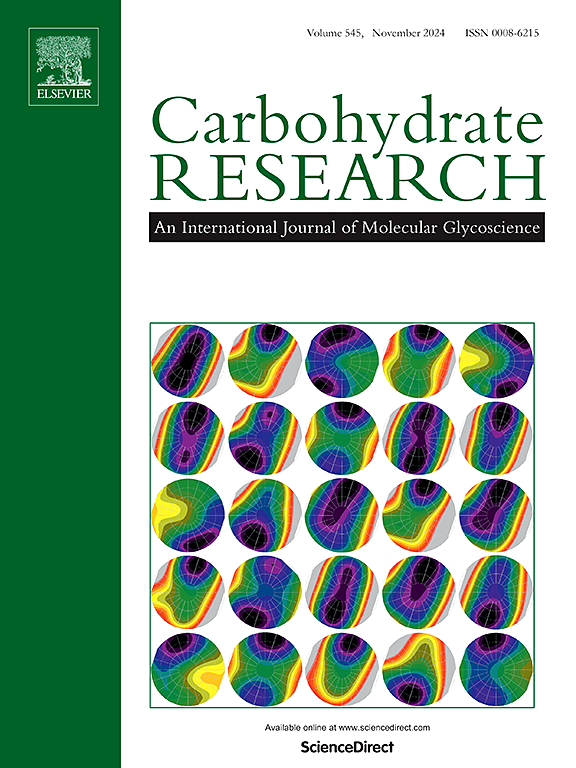具有高稳定性和ros触发的自加速药物释放的智能响应双交联壳寡糖纳米颗粒用于增强乳腺癌治疗。
IF 2.5
3区 化学
Q3 BIOCHEMISTRY & MOLECULAR BIOLOGY
引用次数: 0
摘要
活性氧(ROS)反应的纳米药物递送系统的开发面临着严峻的挑战。过高的交联程度阻碍了纳米载体在肿瘤微环境ROS水平下的完全降解,严重影响药物释放效率。相反,交联度不足会损害纳米颗粒的结构稳定性,导致药物在全身给药过程中过早泄漏。在此,我们提出了一种创新的策略,构建双交联壳寡糖纳米颗粒(NPs),共载姜黄素和葡萄糖氧化酶(GOx),以提高结构稳定性。这些工程NPs可以通过gox介导的葡萄糖向H2O2的催化转化来放大细胞内ROS浓度,从而建立一个ROS触发的自加速药物释放纳米系统,用于增强肿瘤化疗。体外研究表明,CTCG NPs的姜黄素释放行为取决于包裹在纳米颗粒内的GOx。与不含GOx的纳米颗粒相比,CTCG NPs可以在模拟的正常生理环境中有效地阻止姜黄素的过早释放。纳米颗粒在体内也表现出明显的抗肿瘤作用,能有效抑制肿瘤细胞的增殖。这些结果证明CTCG NPs通过在肿瘤微环境中原位产生ROS实现药物的可控释放。这种纳米药物输送系统在乳腺癌治疗中显示出巨大的潜力。本文章由计算机程序翻译,如有差异,请以英文原文为准。

Smart-responsive dual cross-linked chitooligosaccharide nanoparticles with high stability and ROS-triggered self-accelerating drug release for enhanced breast cancer therapy
The development of reactive oxygen species (ROS)-responsive nanodrug delivery systems faces critical challenges. Excessive cross-linking degree prevents complete degradation of nanocarriers under tumor microenvironment ROS levels, significantly compromising drug release efficiency. Conversely, insufficient cross-linking degree impairs the structural stability of nanoparticles, resulting in premature drug leakage during systemic administration. Herein, we present an innovative strategy for constructing dual cross-linked chitooligosaccharide nanoparticles (NPs) co-loaded with curcumin and glucose oxidase (GOx) to enhance structural stability. These engineered NPs can amplify intracellular ROS concentration through GOx-mediated catalytic conversion of glucose to H2O2, thereby establishing a ROS-triggered self-accelerating drug release nanosystem for enhanced tumor chemotherapy. In vitro studies have shown that the curcumin release behavior of CTCG NPs depends on the GOx encapsulated inside the nanoparticles. Compared with nanoparticles without GOx, CTCG NPs can effectively prevent the premature release of curcumin in a simulated normal physiological environment. The nanoparticles also showed significant anti-tumor effect and could effectively inhibit the proliferation of tumor cells in vivo. These results proved that CTCG NPs achieve controllable release of drugs through in situ production of ROS in the tumor microenvironment. This nanodrug delivery system shows promising potential for breast cancer therapy.
求助全文
通过发布文献求助,成功后即可免费获取论文全文。
去求助
来源期刊

Carbohydrate Research
化学-生化与分子生物学
CiteScore
5.00
自引率
3.20%
发文量
183
审稿时长
3.6 weeks
期刊介绍:
Carbohydrate Research publishes reports of original research in the following areas of carbohydrate science: action of enzymes, analytical chemistry, biochemistry (biosynthesis, degradation, structural and functional biochemistry, conformation, molecular recognition, enzyme mechanisms, carbohydrate-processing enzymes, including glycosidases and glycosyltransferases), chemical synthesis, isolation of natural products, physicochemical studies, reactions and their mechanisms, the study of structures and stereochemistry, and technological aspects.
Papers on polysaccharides should have a "molecular" component; that is a paper on new or modified polysaccharides should include structural information and characterization in addition to the usual studies of rheological properties and the like. A paper on a new, naturally occurring polysaccharide should include structural information, defining monosaccharide components and linkage sequence.
Papers devoted wholly or partly to X-ray crystallographic studies, or to computational aspects (molecular mechanics or molecular orbital calculations, simulations via molecular dynamics), will be considered if they meet certain criteria. For computational papers the requirements are that the methods used be specified in sufficient detail to permit replication of the results, and that the conclusions be shown to have relevance to experimental observations - the authors'' own data or data from the literature. Specific directions for the presentation of X-ray data are given below under Results and "discussion".
 求助内容:
求助内容: 应助结果提醒方式:
应助结果提醒方式:


